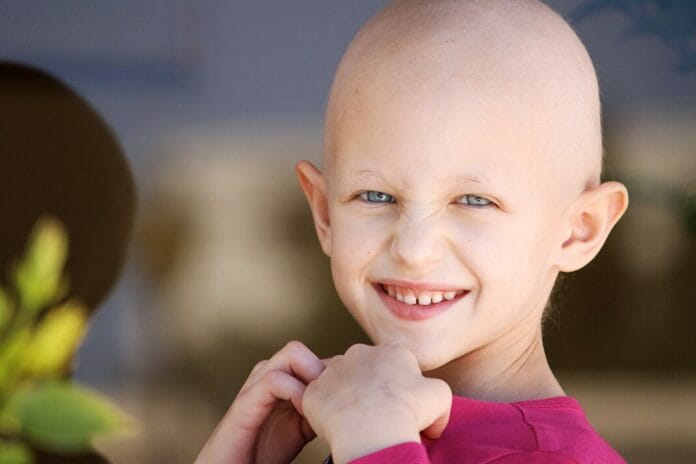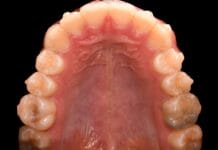Childhood cancer affects one in 285 children in the United States.1 The 5-year survival rate has improved and currently hovers around 80% in developed countries. Survivors of childhood cancer often face numerous complications, including those affecting dental and craniofacial development. These individuals exhibit a higher incidence of oral and dental issues compared to controls. Factors such as the type of cancer treatment, socioeconomic status, and availability of dental care play significant roles in the prevalence of these abnormalities.2
A recently published systematic review aimed to identify the current knowledge on the prevalence of oral, dental, and craniofacial side effects of antineoplastic treatment in childhood cancer survivors.2
The Review
A literature search was conducted, and 781 published articles were identified. Most were excluded due to the exclusion criteria, which consisted of studies reporting on childhood cancer survivors > 19 years of age, those treated after the age of 15, and those with active disease or undertreatment.2
Inclusion criteria included participants aged four to 19 years, a history of malignancy treated with various protocols from birth to age 15, and more than eight months elapsed since the end of antineoplastic treatment.2
From the reviewed literature, seventeen retrospective cross-sectional and case-control studies conducted between 1994 and 2022 were included. These studies collectively examined 983 childhood cancer survivors using clinical and radiographic methods for dental adverse effects, compared to 1266 healthy controls matched by age and gender.2
The Results
The review’s primary finding revealed that childhood cancer survivors exhibited a significantly higher prevalence of both clinical and radiographic late-onset dental defects compared to the healthy control group.2
Three studies indicated that childhood cancer survivors are more prone to developing dental caries, with childhood cancer survivors showing higher mean DMFT (decayed, missing, filled teeth) values compared to healthy controls.2
These findings align with previous research that reported worse clinical indices for childhood cancer survivors. The elevated DMFT scores among childhood cancer survivors may result from decreased salivary flow and a microbial shift toward a more cariogenic flora. Additionally, earlier studies have shown that younger patients receiving high doses of radiation are at greater risk for tooth decay.2
Similarly, childhood cancer survivors exhibited poorer oral hygiene and gingival indices, which is consistent with recent reviews showing increased biofilm accumulation and gingivitis in these patients compared to controls.2
Researchers associated this with certain phases of antineoplastic treatment, during which patients with low platelet levels are advised against toothbrushing and interdental cleaning to prevent bacteremia. However, this recommendation is not universally accepted, as other researchers argue that patients should be able to maintain oral hygiene without bleeding, regardless of varying platelet counts.2
Late-onset clinical dental developmental defects were reported in 11 studies. Among childhood cancer survivors, discoloration was the most frequently observed defect, followed by microdontia, hypodontia, and enamel disturbances. In contrast, the prevalence of these defects was low in the control group.2
Radiographic defects were reported in 11 of the 17 studies reviewed. The most common radiographic defect was arrested root development, followed by agenesis and delayed eruption.2
The incidence and severity of these defects are influenced by risk factors related to the specific characteristics of antineoplastic therapy. One such factor is the age at diagnosis, which correlates directly with the stage of tooth development. Other factors include the type and duration of treatment, the absorbed radiation dose, and the radiation field.2
Conclusion
Childhood cancer survivors are at risk of developing dental issues due to both their illness and its treatment. The nature of these defects appears to be linked to the stage of tooth development, though the factors influencing their severity remain unclear. The most frequently observed defects include microdontia, impaired root growth, and agenesis.2
Regular evaluations are essential to monitor the development and oral health of childhood cancer survivors throughout their lives. Being aware of a patient’s history of childhood cancer will provide insight into risk factors of late-onset defects as well as caries risk, allowing for early diagnosis, intervention, and personalized treatment planning.2
Before you leave, check out the Today’s RDH self-study CE courses. All courses are peer-reviewed and non-sponsored to focus solely on high-quality education. Click here now.
Listen to the Today’s RDH Dental Hygiene Podcast Below:
References
- US Childhood Cancer Statistics. (n.d.). American Childhood Cancer Organization. https://www.acco.org/us-childhood-cancer-statistics/
- Seremidi, K., Gizani, S., Dahllöf, G., et al. Dental Management of Long-Term Childhood Cancer Survivors: A Systematic Review. Eur Arch Paediatr Dent. Published online May 21, 2024. https://link.springer.com/article/10.1007/s40368-024-00896-5












